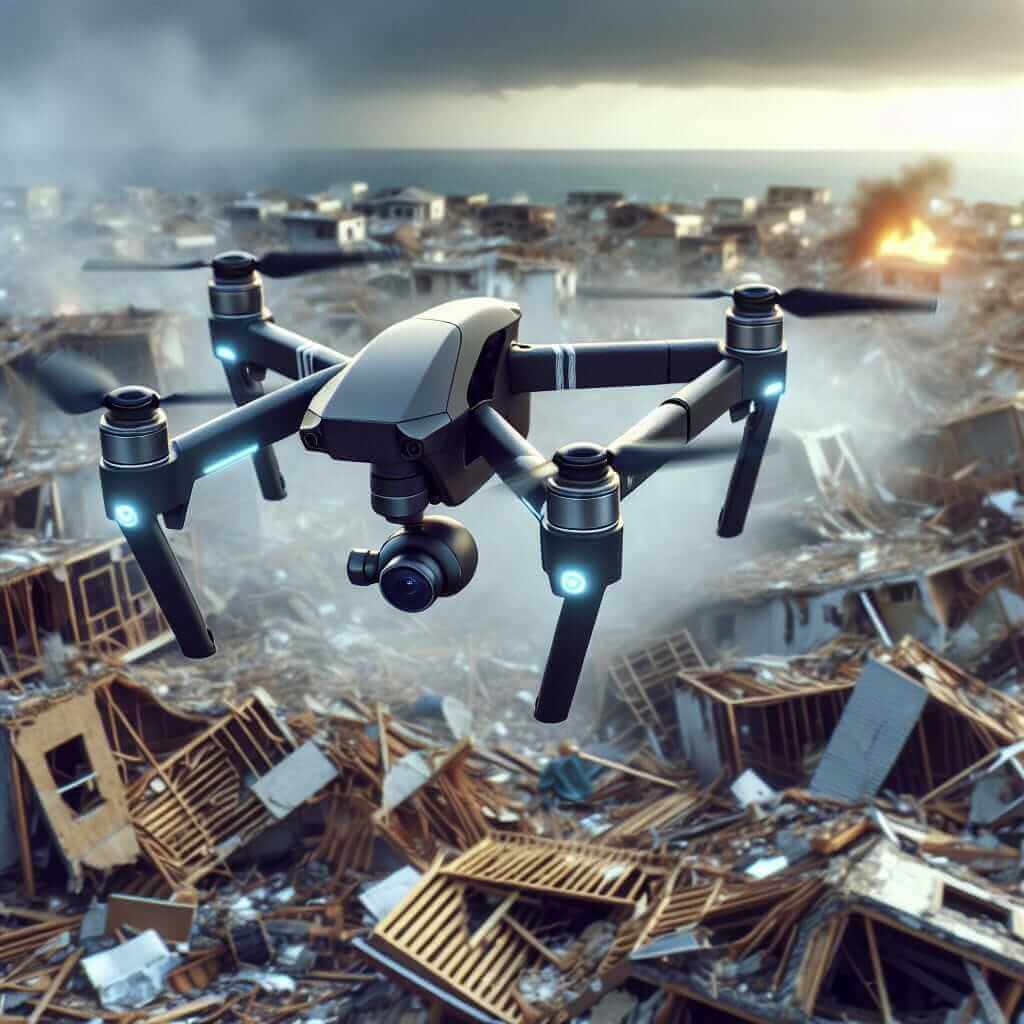The IELTS Reading test is a challenging part of the exam that assesses your ability to understand and interpret a variety of texts. Given the growing significance of technology, particularly Artificial Intelligence (AI), in modern contexts, the question “How is artificial intelligence being used in disaster response?” is both highly relevant and likely to appear in future IELTS exams. This article will provide a comprehensive sample reading test, focusing on the use of AI in disaster response. We will also offer detailed explanations, answer keys, vocabulary, grammar, and tips for excelling in the Reading section of the IELTS exam.
Main Content
Sample Reading Passage – Hard Text
Title: Applications of Artificial Intelligence in Disaster Response
Artificial Intelligence (AI) has revolutionized various sectors, and disaster response is no exception. Governments and organizations are increasingly leveraging AI technologies to enhance the efficiency and effectiveness of disaster management strategies. AI algorithms are used for a myriad of tasks ranging from early warning systems to resource allocation and damage assessment.
One of the most notable applications of AI in disaster response is predictive analytics. By analyzing vast amounts of data, AI systems can forecast natural disasters such as hurricanes, floods, and earthquakes with remarkable accuracy. These predictions allow authorities to initiate timely evacuations and mobilize resources, potentially saving countless lives.
In the aftermath of a disaster, AI-powered drones and satellites play a critical role in damage assessment. High-resolution images captured by these devices are analyzed by AI models to identify affected areas and estimate infrastructure damage. This information is crucial for coordinating relief efforts and restoring essential services.

Another significant use of AI is in communication and coordination during a crisis. AI-driven chatbots and virtual assistants provide real-time information and support to affected individuals, guiding them to safety and assisting with recovery processes. Additionally, AI systems optimize the distribution of resources such as food, water, and medical supplies by analyzing data on population density, road conditions, and supply levels.
AI also aids in the recovery phase by facilitating psychological support. Sentiment analysis algorithms can gauge the emotional state of individuals affected by a disaster by analyzing their social media posts. This information enables mental health professionals to prioritize those in need of immediate psychological intervention.
In conclusion, the integration of AI in disaster response has transformed the way we prepare for and react to crises. Its predictive capabilities, damage assessment tools, communication aids, and resource optimization strategies make it a vital component of modern disaster management.
Questions
1. Multiple Choice
- What is one primary application of AI in disaster response?
- A. Entertainment
- B. Predictive analytics
- C. Financial trading
- D. Marketing strategies
2. Identifying Information (True/False/Not Given)
- AI systems can only predict hurricanes but not other types of natural disasters.
- A. True
- B. False
- C. Not Given
3. Identifying Writer’s Views/Claims (Yes/No/Not Given)
- The author believes that AI in disaster response is more beneficial than traditional methods.
- A. Yes
- B. No
- C. Not Given
4. Matching Information
-
Match the following AI applications to their respective descriptions:
-
(i) Predictive analytics
-
(ii) Damage assessment
-
(iii) Communication and coordination
-
(iv) Psychological support
-
A. Analyzing high-resolution images to estimate damage.
-
B. Sentiment analysis to gauge emotional states.
-
C. Forecasting natural disasters.
-
D. Optimizing resource distribution.
-
5. Summary Completion
- Complete the summary using words from the passage.
AI has significantly improved disaster response through various applications. By employing __ (i) analytics, authorities can forecast natural disasters and initiate timely evacuations. AI-powered drones and satellites aid in __ (ii) by providing high-resolution images that assess damage. Communication and coordination are enhanced through AI-driven __ (iii), which offer real-time information. Finally, AI supports recovery by analyzing social media for __ (iv) states, enabling mental health professionals to prioritize help.
6. Short-answer Questions
- What type of AI model analyzes social media posts to assess emotional states?
- Answer: Sentiment analysis algorithms
Answer Keys
1. Multiple Choice
- B. Predictive analytics
2. Identifying Information (True/False/Not Given)
2. B. False
3. Identifying Writer’s Views/Claims (Yes/No/Not Given)
3. C. Not Given
4. Matching Information
4.
- (i) C. Forecasting natural disasters.
- (ii) A. Analyzing high-resolution images to estimate damage.
- (iii) D. Optimizing resource distribution.
- (iv) B. Sentiment analysis to gauge emotional states.
5. Summary Completion
(i) predictive
(ii) damage assessment
(iii) chatbots
(iv) emotional
6. Short-answer Questions
- Sentiment analysis algorithms
Common Mistakes
- Misinterpreting the difference between “True/False/Not Given” and “Yes/No/Not Given.”
- Skipping over key words in the passage that significantly change the meaning.
- Overlooking the importance of timing – spending too much time on difficult questions.
Vocabulary
- Predictive (adj): /prɪˈdɪktɪv/ – relating to the ability to predict
- Analytics (n): /ænəˈlɪtɪks/ – systematic analysis of data or statistics
- Mobilize (v): /ˈmoʊbəˌlaɪz/ – to prepare and organize for active service
- Sentiment (n): /ˈsɛntɪmənt/ – a view or feeling about something
Grammar
- Passive Voice: “Data is analyzed by AI models.”
- Structure: [Subject] + [to be (am/is/are/was/were)] + [past participle] + [by-agent]
- Example: “The damage was assessed by high-resolution images.”
Advice for High Reading Scores
- Practice Regularly: Engage in consistent practice using sample tests and past papers.
- Time Management: Allocate adequate time for each section and avoid spending too much time on any single question.
- Improve Vocabulary: Enhance your word bank, focusing especially on academic and topic-specific terms.
- Read Actively: Practice skimming and scanning techniques to quickly locate information.
- Analyze Mistakes: Review incorrect answers thoroughly to understand your mistakes and prevent them in future tests.